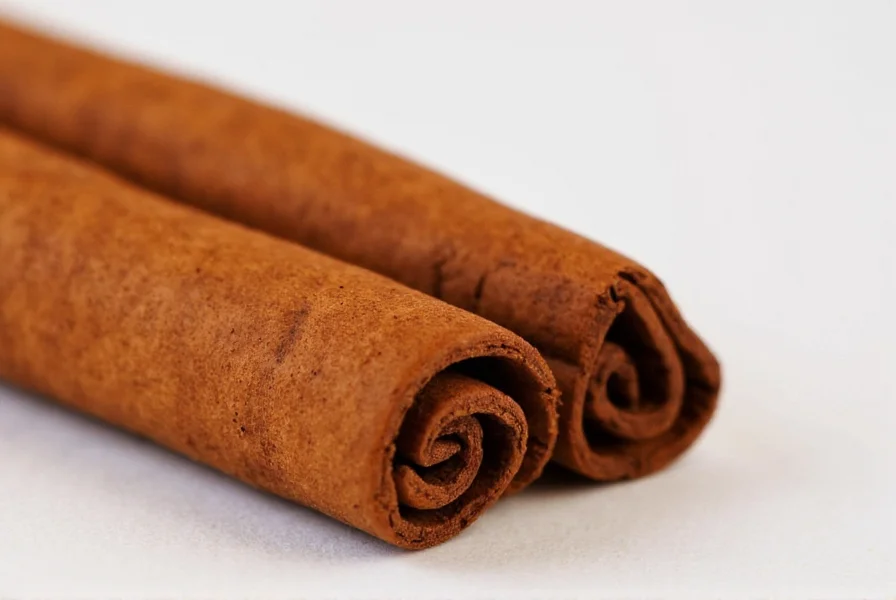Table of Contents
Cinnamon is one of the most beloved spices in the world, known for its warm, sweet aroma and versatility in both sweet and savory dishes. Whether you're baking a batch of cinnamon rolls or spicing up your morning coffee, this spice has been a staple in kitchens across cultures for centuries. But where exactly does this magical spice come from? Let's dive into the origin of cinnamon and uncover its fascinating history.

The Origin of Cinnamon
The story of cinnamon begins in the ancient forests of Sri Lanka, where it has been harvested for over 2,000 years. However, the origins of cinnamon are more complex than just one region. Historically, cinnamon was also sourced from parts of India, China, and Southeast Asia, but today, Sri Lanka is considered the primary producer of true cinnamon (Cinnamomum verum).
The bark of the cinnamon tree is carefully stripped, dried, and rolled into the familiar quills that we see in stores. This process, passed down through generations, has remained largely unchanged for centuries. The origin of cinnamon is not only tied to geography but also to the deep cultural and historical significance of this spice.

Types of Cinnamon
There are several types of cinnamon, each with its own unique flavor profile and culinary uses:
- True Cinnamon (Cinnamomum verum): This is the most prized variety, known for its delicate, sweet flavor. It's commonly used in desserts and beverages.
- Cassia Cinnamon (Cinnamomum cassia): This is the more common and cheaper variety found in supermarkets. It has a stronger, more pungent flavor and is often used in baked goods and savory dishes.
- Chinese Cinnamon (Cinnamomum loureiroi): Slightly different in taste, it's used in traditional Chinese medicine and cooking.
- Batavian Cinnamon (Cinnamomum burmannii): Often used in Indonesian and Malaysian cuisines, it has a lighter, more aromatic profile.
Understanding these differences can help you choose the right type of cinnamon for your recipe. Here's a quick comparison table:
| Type | Origin | Flavor | Common Use |
|---|---|---|---|
| True Cinnamon | Sri Lanka | Mild, sweet | Desserts, drinks |
| Cassia Cinnamon | China, Indonesia | Strong, spicy | Baked goods, savory dishes |
| Chinese Cinnamon | China | Earthy, slightly bitter | Traditional medicine, cooking |
| Batavian Cinnamon | Indonesia | Light, aromatic | Asian cuisines |
Practical Tips for Using Cinnamon
Whether you're a seasoned chef or a home cook, here are some practical tips to make the most of your cinnamon:
- Use it fresh: Ground cinnamon loses its potency quickly. For the best flavor, use freshly ground cinnamon or buy whole sticks to grind as needed.
- Add it early: When cooking with cinnamon, add it early in the process to allow its flavor to infuse into the dish.
- Pair it wisely: Cinnamon pairs well with apples, bananas, nuts, and chocolate. Try it in oatmeal, yogurt, or even savory dishes like stews and curries.
- Make your own spice blend: Combine cinnamon with other spices like nutmeg, cloves, and allspice to create a custom mix for baking or seasoning.
- Experiment with forms: Try using cinnamon sticks in teas or mulled drinks for a more intense flavor.
Buying Guide for Cinnamon
If you're looking to purchase high-quality cinnamon, consider the following factors:
Features
- Source: Look for cinnamon labeled as "true" or "Sri Lankan" for the highest quality.
- Form: Choose between ground cinnamon and cinnamon sticks. Sticks are ideal for steeping, while ground is better for baking.
- Packaging: Opt for vacuum-sealed or airtight containers to preserve freshness.
Advantages
- Flavor: High-quality cinnamon offers a more nuanced, sweet flavor compared to lower-grade varieties.
- Versatility: True cinnamon can be used in a wide range of dishes, from desserts to savory meals.
- Health Benefits: Cinnamon is rich in antioxidants and may have anti-inflammatory properties.
Use Cases
- Baking: Perfect for pies, cookies, and cakes.
- Drinks: Great in coffee, tea, and hot chocolate.
- Seasoning: Adds depth to meat dishes, soups, and stews.
- Home Remedies: Used in natural remedies for digestion and blood sugar regulation.
Target Audience
- Cooking Enthusiasts: Those who enjoy experimenting with flavors in their kitchen.
- Health-conscious Individuals: People interested in the potential health benefits of cinnamon.
- Professional Chefs: Those who want to elevate their dishes with authentic ingredients.
Suitable Occasions
- Holiday Baking: Ideal for making spiced cookies, gingerbread, and pies.
- Weekend Brunches: Enhances breakfast items like pancakes and French toast.
- Warming Drinks: Perfect for cold weather, especially in winter.
- Crafty Projects: Used in DIY candles and potpourris for a cozy aroma.
Frequently Asked Questions
Where does cinnamon originally come from?
Cinnamon originally comes from the inner bark of trees belonging to the Cinnamomum family. True cinnamon (Cinnamomum verum) has its historical origins in Sri Lanka, where it has been cultivated for over 2,000 years. While other varieties of cinnamon come from China, Indonesia, and other parts of Southeast Asia, Sri Lanka remains the primary source of the highest quality "true cinnamon."
What's the difference between true cinnamon and cassia cinnamon?
True cinnamon (Cinnamomum verum) comes primarily from Sri Lanka and has a delicate, sweet flavor with a light reddish-brown color. It consists of many thin, papery layers that form a soft, hollow quill. Cassia cinnamon (Cinnamomum cassia), commonly found in supermarkets, has a stronger, more pungent flavor, a darker reddish-brown color, and is made from a single, thick, hard layer of bark. True cinnamon also contains significantly less coumarin, a compound that can be harmful in large quantities.
How did cinnamon spread from Sri Lanka to the rest of the world?
Cinnamon was highly prized in ancient times and became a valuable commodity in international trade. Arab traders initially controlled the cinnamon trade, creating elaborate stories about its origins to maintain their monopoly. By the 15th century, Portuguese explorers reached Sri Lanka and took control of the cinnamon trade. Later, the Dutch and British also dominated Sri Lanka's cinnamon industry. This historical trade network gradually introduced cinnamon to Europe, the Middle East, and eventually worldwide.
Why is Sri Lankan cinnamon considered superior to other varieties?
Sri Lankan cinnamon (true cinnamon) is considered superior due to its delicate, sweet flavor profile, lower coumarin content, and complex aromatic compounds. The unique climate and soil conditions of Sri Lanka contribute to its distinctive quality. While cassia cinnamon has a stronger, more intense flavor preferred in some applications, true cinnamon offers a more nuanced taste that's ideal for desserts and beverages where a subtle cinnamon flavor is desired.
How can I identify authentic Sri Lankan cinnamon?
Authentic Sri Lankan cinnamon (true cinnamon) can be identified by several characteristics: it forms multiple thin layers that curl inward to create a delicate, hollow quill; it has a light reddish-brown color; it has a sweeter, more complex aroma; and it's typically more expensive than cassia. When broken, true cinnamon should be brittle and crumble easily. Look for labels specifying "Ceylon cinnamon," "true cinnamon," or "Cinnamomum verum" and check for Sri Lankan origin.
Conclusion
Cinnamon is more than just a spice—it's a piece of history, a symbol of warmth, and a flavor that transcends borders. From its humble beginnings in the ancient forests of Sri Lanka to its presence on modern-day kitchen shelves, the origin of cinnamon tells a story of culture, tradition, and taste. Whether you're using it in a simple cup of tea or an elaborate dessert, cinnamon continues to bring joy and flavor to people around the world.










 浙公网安备
33010002000092号
浙公网安备
33010002000092号 浙B2-20120091-4
浙B2-20120091-4